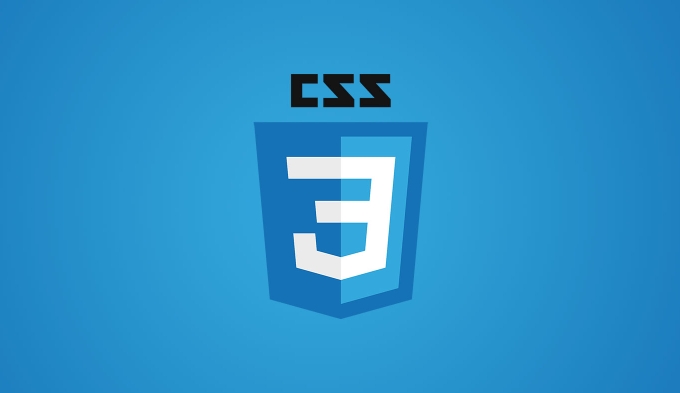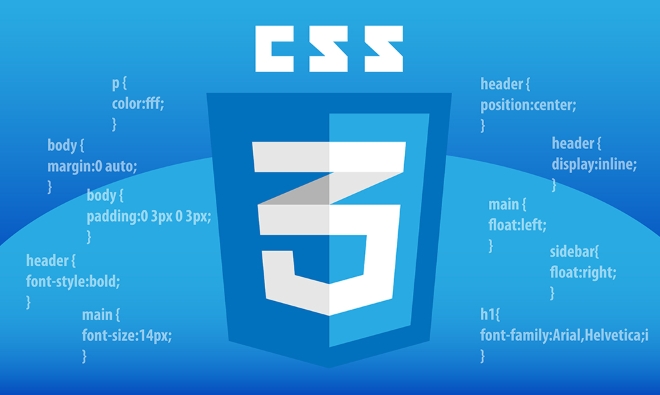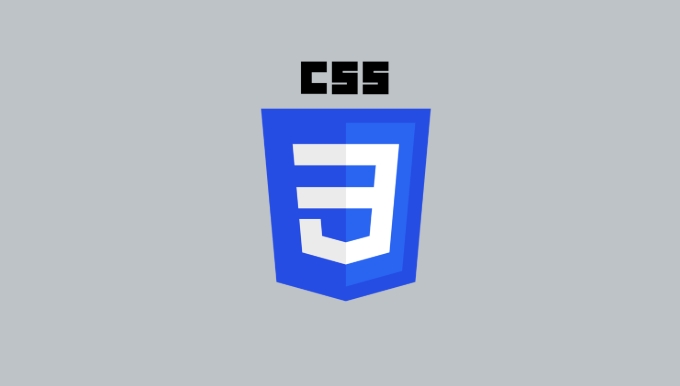CSS performance optimization improves web page loading speed and user experience. The main methods include: 1. Reduce the CSS file size, use compression tools, delete redundant code, merge class names, and avoid global resets; 2. Use critical path CSS, extract and inline the required styles on the first screen, and delay loading of non-critical CSS; 3. Load non-critical CSS asynchronously, use media attributes, dynamic insertion or preload; 4. Optimize selectors and hierarchical structures, give priority to class selectors, avoid long-chain nesting, and control specificity. These methods help speed rendering, reduce resource consumption, while taking into account maintainability.

CSS is an important part of web page loading speed and performance optimization. Many people only focus on the response time of images, scripts or servers, but in fact, the writing, loading method and structural design of CSS will directly affect the rendering speed of pages. Optimizing CSS can not only improve user experience, but also reduce resource consumption.

Reduce CSS file size
The smaller the file size, the faster it loads. Compressing CSS code is the most basic step. Unnecessary spaces, comments, and repeat styles can be automatically removed through the tool. In addition, avoiding deep nesting such as .container .box .item will not only affect readability, but also increase file size.

Some practical suggestions:
- Use CSS compression tools (such as Clean CSS, PostCSS)
- Delete unused CSS styles
- Merge the same or similar class names
- Avoid global resets (such as
* { margin: 0; padding: 0 }), and choose a lighter solution such asnormalize.css
Using Critical CSS (Critical CSS)
When the browser loads the page, it first parses HTML and CSS, and then renders the content. If the CSS file is too large or the loading order is unreasonable, the user will see a white screen or the layout will flash. Extracting and inlining the critical path CSS can make the content on the first screen display faster.

Implementation methods include:
- Tools automatically generate key CSS required for the first screen
- Inline this part of CSS into
of HTML - Delay loading of the remaining non-critical CSS
This allows users to see the basic content without waiting for the entire CSS file to load.
Asynchronously loading non-critical CSS
Not all CSS needs to be loaded early in the page loading. For example, styles for printing, styles for hidden components, etc. can be delayed or loaded on demand.
Common strategies are:
- Use
mediaattributes to load specific stylesheets asynchronously (such asmedia="print") - Dynamically insert CSS files (load after judging conditions through JavaScript)
- Use
rel="preload"to load certain important but non-critical CSS resources in advance
This will not only ensure the speed of the first screen, but will not miss the subsequent styles.
Optimize selectors and hierarchy
Although modern browsers are already very efficient in handling CSS, inefficient selectors can still cause performance problems. For example, complex selectors like div#main > ul li a will allow the browser to parse from right to left, which is less efficient.
Optimization suggestions include:
- Try to use class selectors (
.class) instead of ID or tag selectors - Avoid over-necking and long-chain selectors
- Control CSS specificity to avoid maintenance and performance issues caused by style coverage
In addition, keeping the CSS structure clear also helps with post-maintenance and debugging.
Basically, these common CSS performance optimization methods are all about. It is not necessary to use it all, but the effect will be obvious according to the project situation. The key is to understand the mechanism behind each step, rather than blindly copying it.
The above is the detailed content of Techniques for optimizing CSS performance and load times. For more information, please follow other related articles on the PHP Chinese website!

Hot AI Tools

Undress AI Tool
Undress images for free

Undresser.AI Undress
AI-powered app for creating realistic nude photos

AI Clothes Remover
Online AI tool for removing clothes from photos.

Clothoff.io
AI clothes remover

Video Face Swap
Swap faces in any video effortlessly with our completely free AI face swap tool!

Hot Article

Hot Tools

Notepad++7.3.1
Easy-to-use and free code editor

SublimeText3 Chinese version
Chinese version, very easy to use

Zend Studio 13.0.1
Powerful PHP integrated development environment

Dreamweaver CS6
Visual web development tools

SublimeText3 Mac version
God-level code editing software (SublimeText3)

Hot Topics
 What is 'render-blocking CSS'?
Jun 24, 2025 am 12:42 AM
What is 'render-blocking CSS'?
Jun 24, 2025 am 12:42 AM
CSS blocks page rendering because browsers view inline and external CSS as key resources by default, especially with imported stylesheets, header large amounts of inline CSS, and unoptimized media query styles. 1. Extract critical CSS and embed it into HTML; 2. Delay loading non-critical CSS through JavaScript; 3. Use media attributes to optimize loading such as print styles; 4. Compress and merge CSS to reduce requests. It is recommended to use tools to extract key CSS, combine rel="preload" asynchronous loading, and use media delayed loading reasonably to avoid excessive splitting and complex script control.
 How to use Lotties in Figma
Jun 14, 2025 am 10:17 AM
How to use Lotties in Figma
Jun 14, 2025 am 10:17 AM
In the following tutorial, I will show you how to create Lottie animations in Figma. We'll use two colorful designs to exmplify how you can animate in Figma, and then I'll show you how to go from Figma to Lottie animations. All you need is a free Fig
 Breaking Boundaries: Building a Tangram Puzzle With (S)CSS
Jun 13, 2025 am 11:33 AM
Breaking Boundaries: Building a Tangram Puzzle With (S)CSS
Jun 13, 2025 am 11:33 AM
We put it to the test and it turns out Sass can replace JavaScript, at least when it comes to low-level logic and puzzle behavior. With nothing but maps, mixins, functions, and a whole lot of math, we managed to bring our Tangram puzzle to life, no J
 External vs. Internal CSS: What's the Best Approach?
Jun 20, 2025 am 12:45 AM
External vs. Internal CSS: What's the Best Approach?
Jun 20, 2025 am 12:45 AM
ThebestapproachforCSSdependsontheproject'sspecificneeds.Forlargerprojects,externalCSSisbetterduetomaintainabilityandreusability;forsmallerprojectsorsingle-pageapplications,internalCSSmightbemoresuitable.It'scrucialtobalanceprojectsize,performanceneed
 Does my CSS must be on lower case?
Jun 19, 2025 am 12:29 AM
Does my CSS must be on lower case?
Jun 19, 2025 am 12:29 AM
No,CSSdoesnothavetobeinlowercase.However,usinglowercaseisrecommendedfor:1)Consistencyandreadability,2)Avoidingerrorsinrelatedtechnologies,3)Potentialperformancebenefits,and4)Improvedcollaborationwithinteams.
 CSS Case Sensitivity: Understanding What Matters
Jun 20, 2025 am 12:09 AM
CSS Case Sensitivity: Understanding What Matters
Jun 20, 2025 am 12:09 AM
CSSismostlycase-insensitive,butURLsandfontfamilynamesarecase-sensitive.1)Propertiesandvalueslikecolor:red;arenotcase-sensitive.2)URLsmustmatchtheserver'scase,e.g.,/images/Logo.png.3)Fontfamilynameslike'OpenSans'mustbeexact.
 What is Autoprefixer and how does it work?
Jul 02, 2025 am 01:15 AM
What is Autoprefixer and how does it work?
Jul 02, 2025 am 01:15 AM
Autoprefixer is a tool that automatically adds vendor prefixes to CSS attributes based on the target browser scope. 1. It solves the problem of manually maintaining prefixes with errors; 2. Work through the PostCSS plug-in form, parse CSS, analyze attributes that need to be prefixed, and generate code according to configuration; 3. The usage steps include installing plug-ins, setting browserslist, and enabling them in the build process; 4. Notes include not manually adding prefixes, keeping configuration updates, prefixes not all attributes, and it is recommended to use them with the preprocessor.
 What are CSS counters?
Jun 19, 2025 am 12:34 AM
What are CSS counters?
Jun 19, 2025 am 12:34 AM
CSScounterscanautomaticallynumbersectionsandlists.1)Usecounter-resettoinitialize,counter-incrementtoincrease,andcounter()orcounters()todisplayvalues.2)CombinewithJavaScriptfordynamiccontenttoensureaccurateupdates.






